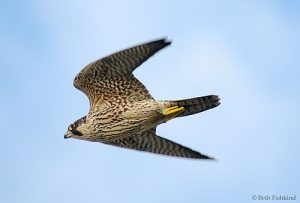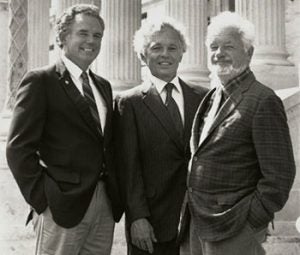How the fastest American raptor nearly nosedived into extinction

The peregrine falcon is renowned for its ability to reach diving speeds up to 200 mph. It’s also known for having one of the longest migrations in North America, reaching up to 15,000 miles.
Peregrine falcons are one of the most widespread birds in the world, found on every continent except Antarctica. This extensive range is what made the American peregrine’s dive into near-extinction so worrying.
The peregrine’s swift descent
Historically, there were estimated to be approximately 4,000 breeding pairs of peregrines in the United States. Despite its eminent speed and strength, the population reached alarmingly low numbers in the 1970s when the bird completely disappeared from the eastern U.S. and only 300 breeding pairs remained throughout the rest of the country.

A key factor in the peregrine’s population decline was the severe impacts associated with the widespread use of the pesticide DDT in the 1940s and several decades after. The chemical made its way into the food chain and, as top predators, peregrine falcons absorbed large amounts of DDT from their prey.
High concentrations of a metabolite in DDT prevented normal calcium production in birds, which led to thin eggshells that cracked when the birds tried to incubate their eggs. As a result, populations fell dramatically.
Acting just in time
The two subspecies of peregrine falcons – the American peregrine falcon and the Arctic peregrine falcon – were first listed as endangered under the predecessor to the Endangered Species Act (ESA), the Endangered Species Conservation Act of 1969, and then listed again under the ESA once the law was established in 1973.
[Tweet “The ESA and the federal ban on DDT allowed the peregrine falcon to complete its long journey to recoveryhttps://edf.org/8Em”]

In the year before the ESA was signed into law by President Nixon, the federal government banned the use of DDT, a hard-earned legal victory led by EDF founders Art Cooley, Charlie Wurster and Dennis Puleston.
There were additional efforts at the state level as well.
Wisconsin was at the forefront of re-establishing peregrine falcon populations, banning the use of DDT in the state in 1970, two years before the federal government.
The combination of the ESA becoming law, the federal ban on DDT, and states stepping up together marked a life-saving turning point for many endangered bird species. But the success story wasn’t finished just yet.
How the peregrine rebounded
Re-establishing peregrine populations in such an expansive area called for new techniques.

The Peregrine Recovery Plan, prepared in 1979, aimed to re-establish nesting populations through captive breeding and release programs. One of the most extensive efforts was to recover the eastern population through programs initiated by the Cornell Lab of Ornithology and later led by The Peregrine Fund.
Thanks to these reintroduction programs, in addition to large-scale protection of nesting sites, peregrine falcon populations started rising in 1980. The combination of state and federal support for peregrine programs allowed the falcon to complete its long journey to recovery and created a model for future conservation efforts.
Within two decades of the ESA’s establishment, the peregrine falcon population was successfully recovered and re-established. The Arctic peregrine falcon was successfully delisted in 1994 and the American peregrine falcon in 1999.
Today, peregrine falcons prosper all over the United States.
Michael Bean started working at EDF in 1977 directing wildlife conservation policy initiatives. In 2009, Michael joined the U.S. Department of the Interior as counselor to the Assistant Secretary for Fish, Wildlife and Parks, and later as the Principal Deputy Assistant Secretary. Today, Michael is back as an advisor to EDF.
Related:
How our nation’s symbol soared back from the brink >>
Dear Congress, protect the integrity of the ESA >>
From 15 birds to flagship status: An American conservation movement takes flight >>












